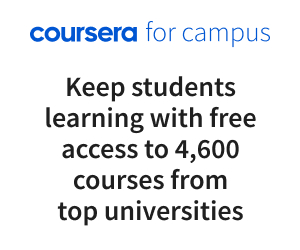Universities have been forced online during the pandemic. Despite the difficulties this has created, remote learning can now be used to address legacy challenges
The Covid-19 pandemic moved university teaching around the world online. While this created many difficulties, digital transformation could help rectify long-standing problems in Indian higher education and ultimately make graduates more employable.
“It’s an opportunity to use this digital technology to transform our processes,” Professor Mirle Surappa, vice-chancellor of Anna University in Chennai, India, told a Times Higher Education roundtable titled “Maintaining learning outcomes with the right content strategy: new pathways for higher education in India”.
Digital technology allows universities to offer a greater variety of courses to more students and to provide them with a level of support that was not always possible with in-class teaching. It also circumvents legacy problems, such as a shortage of teachers and the rigidity of India’s local university system, as well as making it easier to shape curricula around what employers want in graduates.
Digital transformation was already taking place in the higher education sector before Covid-19 hit, but the pandemic has sped up the process significantly. Raghav Gupta, Coursera’s managing director for India and the Asia-Pacific region, said developments that would usually “happen in five to seven years have happened in five to seven months”. Since countries began locking down in March to halt the spread of the virus, more than 3,700 universities have joined the Coursera for Campus platform.
Online learning has changed not just where students learn, but how. Faculty members need to keep up with students’ interests and how they want to be taught. “We’re now getting into the mode where students are king and can choose their directions,” said Dr Sandeep Sancheti, vice-chancellor of the SRM Institute of Science and Technology in Chennai. “What they want to study, read, do will be in their hands.”
Internationally, teaching is becoming “more student based and less teacher based, and it is up to teachers to keep up with the changing times”, said Dr Prem Kumar Khosla, vice-chancellor at Shoolini University in Himachal Pradesh. Indian universities need to keep up with international standards, he said.
This student focus is a departure not only from the traditional model of in-class learning, but also from India’s traditionally rigid curriculum structure. With institutions established to focus solely on medicine or engineering, for example, many are unable to offer multidisciplinary learning, said Sancheti.
Employers now want graduates to have a variety of skills, and online learning empowers institutions to engage with other universities or third-party providers so they can offer courses that were previously not taught by their own faculty.
Digital technologies can also address systemic challenges. Indian universities struggle with teacher shortages, for example, and online learning allows one high-quality teacher to reach many students. “I think technology can fill that gap,” said Sancheti.
However, one of the major obstacles facing remote learners in India is internet and bandwidth access, especially in the country’s more rural areas. This was the experience of Dr Joseph Nellanatt, Assam Don Bosco University’s pro vice-chancellor and director for distance learning. “We’ve conducted classes, exams and even our convocation online, and the issues around connectivity and bandwidth are real,” he said.
According to Coursera’s Gupta, the vast majority – about 70 per cent – of students using Coursera for Campus are accessing content on a mobile device. “We have to think of a digital campus, as well as the digital gadget at the remote point,” said Dr K. S. Dasgupta, director of the Dhirubhai Ambani Institute of Information and Communication Technology in Gujarat. “This is a new learning system for all of us. If we only talk about content management systems, without the last mile delivery, there could be a flop in the system.”
Gupta said that this was what Coursera’s new Live to Coursera platform was attempting to address. “It can be difficult for students to connect somewhere where there is low connectivity,” he said. With Live to Coursera, “the student can download the lecture and view it offline and can view it as just audio if their connection is poor”.
The panelists agreed that the digital transformation of higher education is here to stay. “It is not a choice, it is a necessity,” said Dasgupta. “A digital campus is the need of the hour.”
The panel
Dene Mullen, deputy news editor, Times Higher Education (chair)
K. S. Dasgupta, director, Dhirubhai Ambani Institute of Information and Communication Technology
Prem Kumar Khosla, founder and vice-chancellor, Shoolini University
Sandeep Sancheti, vice-chancellor, SRM University
Mirle Surappa, vice-chancellor, Anna University
Joseph Nellanatt, pro vice-chancellor, Assam Don Bosco University
Atul Chauhan, chancellor, Amity University
Pradeep Kumar, director, Amity University
Balvinder Shukla, vice-chancellor, Amity University
Watch the roundtable on-demand above or on the THE Connect YouTube channel.










































































